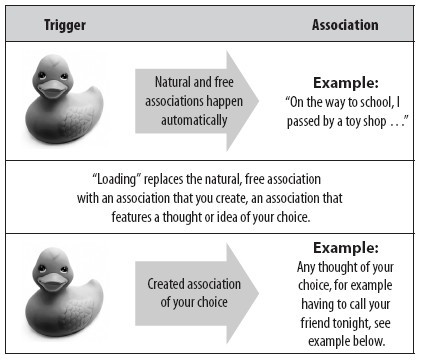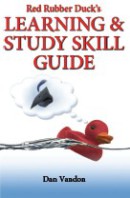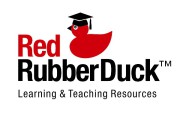
The Association Tool
By DAN VANDON
Look at the picture of the red rubber duck. If you lean back for a second, thinking of the red rubber duck will almost inevitably lead to a stream of associations. The ideas, pictures and memories
that come to your mind depend on all kinds of factors that include your prior experiences and your current mood. We can say that the image of the red rubber duck triggers a stream of associations.
The fun thing about triggers is that you may end up thinking of something that has no connection whatsoever with the initial trigger.
Lean back for another second and think of an item in your home, a landmark or a close friend. That thought will inevitably lead you to have a certain associated memory or thought—a daydream of
various, wandering memories, ideas and future plans. In fact, thinking in associations is a natural habit, one that we are born with.
More importantly for the field of studying and learning, we have an inbuilt capacity to force associations. This means that we can educate our minds to match a certain trigger with an association of
our choice. I call that process “loading.”
Try the following:
- Visualize in your mind an image of both your friend speaking on the phone and an item, for example a rubber duck. Make the image strange and memorable. Visualize this image for some 30 seconds.
- Take a short break.
- Look at the item and re-create in your mind the image you have visualized before.
- Now, place the item wherever you will definitely encounter it tonight. Place the item where you would ususally not expect it.
Once you encounter the item again tonight, you will be reminded of that strange image. In the same second, you will also be reminded of that call you need to make.
This example is primarily meant to illustrate how easy it is to control associations and make them work for you. I assure you that the mechanism of loading triggers with deliberately created
associations of your choice is that simple.
Deliberately working with associations in studying and learning has the great advantage that once a trigger-association sequence is stored in our minds, the trigger almost effortlessly triggers the
association, bringing information to mind. With abstract information, the key to success is in creating triggers and associations that relate to the information you need to learn and retrieve. Don't
miss out on this simple but extremely powerful technique.
Find out how association techniques and "loading" can help you in your next exam and read Red Rubber Duck's Learning & Study Skill Guide.




